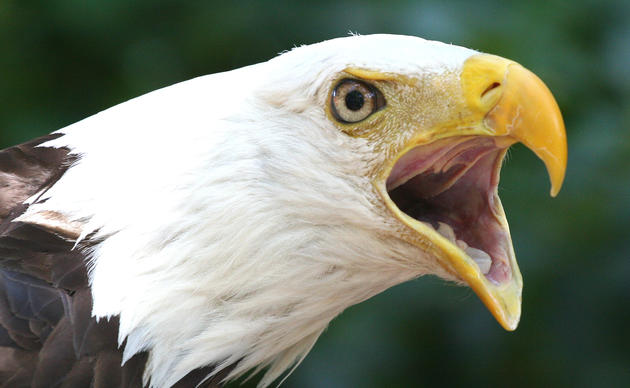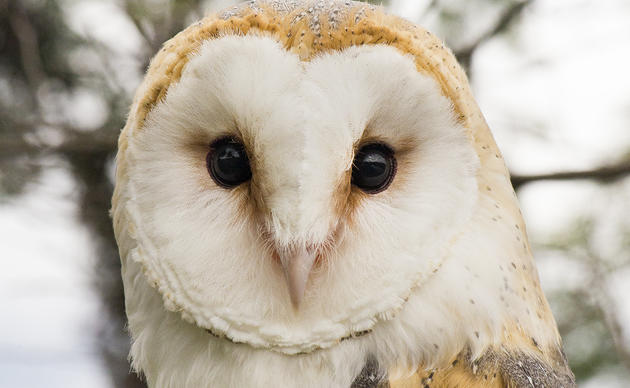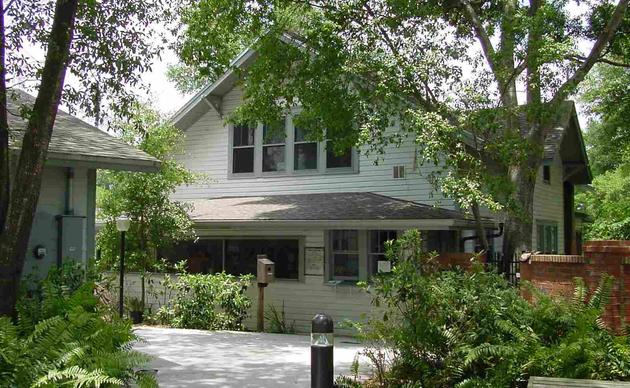Bald Eagle Biology
The Bald Eagle is the symbol of America and personifies strength, majesty and independence. Yet, its very existence is dependent upon how humans manage the environment that is shared with all wildlife species. When chosen as a national symbol in 1782, it was found abundantly throughout the contiguous United States. The population experienced a drastic decline in the early 1900's, due largely to human ignorance and persecution, pesticide use, careless shootings, car and powerline collisions and loss of habitat for nesting and foraging. As a result, the Bald Eagle was listed as a federally endangered species and DDT was banned in 1972. Since that time, the overall population has made a remarkable recovery, a reminder that conservation efforts can make a difference for endangered species. Florida’s eagle population has increased more than 300% since 1972. In 2007, Bald Eagles were removed from the Endangered Species list, having been declared officially “recovered”. Today, Bald Eagles are still protected by the Florida Fish and Wildlife Conservation Commission (FWC) and the US Fish and Wildlife Service (USFWS) under state (F.A.C. 68A-16.002) and federal laws (Bald and Golden Eagle Protection Act and the Migratory Bird Treaty Act).
The Bald Eagle is native to our continent and is one of the largest birds in North America. The Latin name “Haliaeetus leucocehalus” means “white-headed sea eagle”, referencing its genus classification. The word “bald” refers to an old English use of the word meaning “white” since the head is distinctly feathered. Birds commonly confused with Bald Eagles include Ospreys, Turkey Vultures, and Golden Eagles, although Golden Eagles are only occasionally sighted in northern Florida during the winter migratory months.
Like other birds of prey, Bald Eagles exhibit “reverse sexual size dimorphism”, meaning females are larger than males. Female eagles in Florida weigh from 8-12 pounds and have a wingspread up to eight feet. Males are smaller, weighing 6-10 pounds, with a wingspread of six feet. Both sexes have the characteristic white head and tail, yellow beaks and yellow eyes upon maturity. Young eagles, called juveniles, are uniformly brown and larger in size than adults due to longer wing and tail feathers. Immature and subadult refer to plumage sequences after the first year and before adulthood. It takes an eagle 4-6 years to achieve the charactertic white head and tail.
Adaptations for survival include keen eyesight that can identify objects three to four times farther away than humans, powerful feet and claws called “talons” to capture and kill prey, an elongated beak with a sharp tip adept at tearing food, and well-developed muscles in the legs and supporting the beak that aid in prey destruction. Eagles tear and swallow their food in large pieces, temporarily storing it in an area below the throat called the “crop” before actual digestion. The crop is a noticeable bulge when full that can store over two pounds of prey when food is plentiful.
Vocalizations: An eagle’s call is quite distinctive, ranging from a short staccato note, a whining call, and a high pitched scream of descending notes. Vocalizations serve several purposes including greeting, solicitation, territorial defense, threat, and begging calls for food (juveniles).
Longevity: The oldest known Bald Eagle in the wild was 37 at the time of his death, although the average lifespan for an eagle in the wild is believed to be 15-25 years. The oldest known eagle in captivity was 50 years old. Eagles follow a pattern typical of raptors, with lower juvenile survival followed by increasing survival into adulthood.
Diet: Eagles are opportunistic scavengers with a prey base that includes fish, squirrels, reptiles, wading birds, ducks and road-killed animals called carrion. Fish are also stolen from Ospreys in spectacular aerial acrobatics.
THREATS and TERRITORIAL FIGHTS
Threats: The Bald Eagle has no natural predators. Their biggest enemy is humans. Causes of Bald Eagle mortality include collisions with cars and power lines, electrocution, gunshot wounds and poisoning. Lead is highly toxic and a preventable cause of death if bullets/shot and fishing weights were converted to non-lead material. Eagles may also succumb to avian pox, mosquito borne illnesses and food contamination. Loss of nesting and foraging habitat through urban development seriously jeopardizes nesting success for eagles in Florida. These birds are strongly territorial, particularly during nesting season, and are known to engage in battles over nesting habitats, causing injury and even death. In the last decade, Florida has seen an increase in eagle mortality and injury due to territorial fights.
Territorial Fights: Although eagles are highly social during the non-nesting season, intraspecies fighting with aggressive aerial territory battles can occur among eagles throughout the nesting season. Territorial defense behavior includes:
Threat Vocalization: One or both adults will emit a high pitched scream, often repeatedly, at the trespassing eagle.
Circling Display: The defenders will soar over the unwanted eagle until it leaves the area. Note: you may observe this display if an immature eagle in non-threatening plumage enters the nesting area.
Territorial Chase: This is one of the most common and potentially dangerous of all territorial displays. Territory defenders pursue the invader until he/she leaves the area or a fight ensues. This can be a fight to the death. The state of Florida has witnessed an upswing in eagle mortality/injury due to territorial disputes as habitat diminishes. Typically, talon wounds are inflicted on the legs, lower abdomen, chest and head areas, and in severe disputes, mortality occurs.
When mature (age 4-5), eagles return to the vicinity of their original nest site to breed. An area’s carrying capacity is reached when the habitat is saturated with eagles for the amount of food and nest sites that it can support. This causes a natural dispersal of birds into new areas for breeding, including historic ranges and non-traditional nest sites in urban areas.
How you can help, right now
Support the Audubon Center for Birds of Prey
Your donation helps to protect America's birds, wildlife, and habitats. Donate critical funding needed to support our important rehabilitation and education work.
Subscribe to Raptor News
Sign up for our monthly newsletter and stay up to date with what's happening at the Audubon Center for Birds of Prey.
Become a Water Steward
Engage the public in water and energy conservation using simple steps to save water inside the home, outside the home and in your community.




